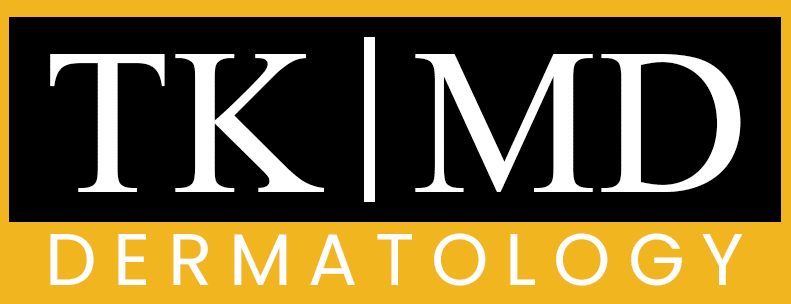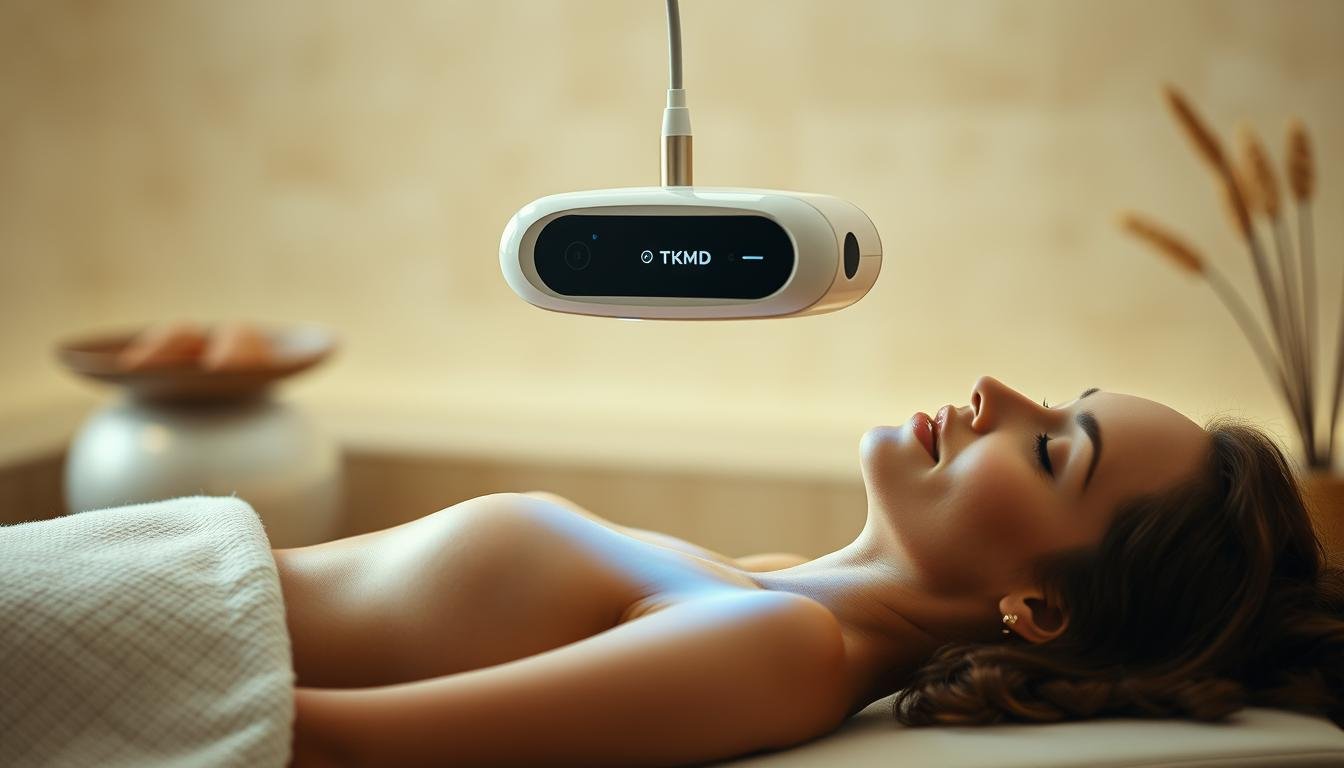Struggling to achieve your ideal body shape can be frustrating and demotivating. Traditional weight loss methods often fall short, leaving many to seek alternative solutions.
Fortunately, advancements in medical technology have led to the development of non-invasive treatments that target stubborn fat deposits without the need for surgery. These modern procedures offer a promising solution for those seeking to reshape their body without the risks and downtime associated with invasive surgeries.
By understanding the science behind these innovative fat reduction treatments, individuals can make informed decisions about their weight loss journey. The benefits of these procedures include minimal downtime, reduced risk of complications, and natural-looking results.
Key Takeaways
- Effective non-invasive weight loss strategies are available, offering alternatives to surgical procedures.
- Modern technologies target fat deposits without incisions, anesthesia, or lengthy recovery periods.
- Various non-invasive treatments destroy fat cells, differing from traditional weight loss methods.
- Benefits include minimal downtime, reduced risk, and natural-looking results.
- Treatment efficacy and expected outcomes vary based on individual body types and goals.
Understanding Non-Invasive Weight Loss Methods
With the advancement in technology, non-invasive weight loss methods have become a viable option for those seeking to reduce fat without surgery. These methods are designed to contour the body and reduce fat without the need for incisions, anesthesia, or significant recovery time, making them an attractive alternative to traditional surgical approaches.
Defining Non-Invasive Weight Loss
Non-invasive weight loss refers to procedures that target fat cells through external technologies, rather than physically removing tissue as in surgical procedures like liposuction. These methods are often used for body contouring, helping individuals achieve their desired shape by reducing stubborn fat deposits that are resistant to diet and exercise.
Differences from Surgical Approaches
The primary difference between non-invasive weight loss methods and surgical approaches lies in their methodology and outcomes. Non-invasive procedures do not involve surgery or the removal of tissue, resulting in fewer risks and less recovery time compared to surgical fat reduction methods. This makes non-invasive body contouring an appealing option for patients who are unwilling or unable to undergo surgery.
Ideal Candidates for Non-Invasive Procedures
Non-invasive weight loss procedures are typically suited for individuals who are within 30 pounds of their ideal weight and have specific areas of fat they wish to address. These treatments are not intended for obesity or significant weight loss but rather for refining body shape. By understanding the capabilities and limitations of non-invasive fat reduction, patients can make informed decisions about their treatment options.
The Science Behind Non Invasive Weight Loss
The science behind non-invasive weight loss is rooted in understanding how different technologies interact with fat cells. Non-invasive weight loss methods utilize various technologies, including cold, heat, light, and sound, to target and eliminate fat cells without damaging surrounding tissues.
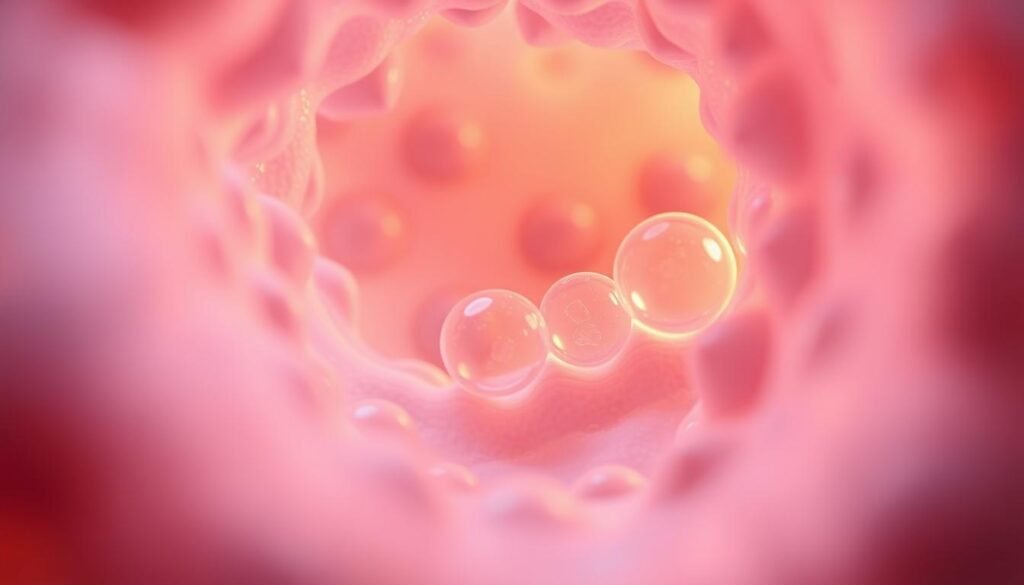
How Fat Cells Respond to Different Technologies
Different technologies trigger different responses in cells. For instance, cold temperatures cause fat cells to undergo apoptosis, or cell death, while heat-based treatments can stimulate lipolysis, the breakdown of fat. According to a study published on PMC, these technologies can effectively target fat cells without harming the surrounding tissue.
- Cold-based treatments like cryolipolysis freeze fat cells, leading to their gradual removal.
- Heat-based treatments, such as radiofrequency, heat fat cells to induce their destruction.
- Light and sound-based treatments also offer promising results by disrupting fat cells.
The Body’s Natural Fat Elimination Process
After fat cells are damaged through non-invasive treatments, the body naturally eliminates them over time. The fat released from damaged cells is processed by the lymphatic system and eliminated through natural metabolic processes. This process typically takes several weeks to months, resulting in a gradual reduction in fat bulges.
The timeline for visible effects varies, but most individuals start noticing changes within two to three months as the body clears the damaged cells. Understanding this natural process helps set realistic expectations for non-invasive weight loss treatments.
Cold-Based Fat Reduction Technologies
For those seeking to reduce fat without surgery, cold-based fat reduction technologies offer a promising solution. These technologies have revolutionized the way we approach fat loss, providing a non-invasive alternative to traditional surgical methods.
CoolSculpting and Cryolipolysis
Cryolipolysis, also known as fat freezing, is a non-invasive fat reduction treatment that uses controlled cooling to target and eliminate fat cells. CoolSculpting is a well-known brand that utilizes cryolipolysis technology. Since its FDA approval in 2010, CoolSculpting has been performed over 17 million times, making it a popular choice for those seeking non-invasive fat reduction.
The procedure involves drawing the targeted fat area into an applicator, where it is cooled to a temperature that crystallizes the fat cells without damaging the surrounding tissue. This process is designed to be safe and effective, with minimal discomfort during and after the treatment.
Fat Freezing Results and Timeline
Patients typically start to see noticeable fat reduction results within 4-6 weeks after the treatment, with optimal results appearing at 3-6 months as the body eliminates the damaged fat cells. The treated area can experience up to 27% fat reduction, making it an effective solution for reducing fat bulges in areas such as the abdomen, flanks, thighs, and under the chin.
The fat freezing treatment process is relatively quick, lasting about an hour per area treated. Most patients can return to their normal activities immediately after the treatment, making it a convenient option for those with busy lifestyles.
Heat-Based Fat Reduction Methods
By harnessing the power of heat, various non-invasive treatments can target and reduce fat cells with precision. Heat-based fat reduction methods have emerged as effective alternatives to surgical weight loss procedures, offering the added benefit of skin tightening.
Radiofrequency Treatments
Radiofrequency (RF) treatments, such as Vanquish, utilize electromagnetic waves to selectively heat and destroy fat cells. This technology not only reduces fat but also stimulates collagen production, leading to tighter, more youthful-looking skin. RF energy is carefully applied to the skin, causing heating in the layer of fat underneath and in the strands that connect the skin to the fat layer.
The treatment is non-invasive, with some devices using tiny needles to place RF energy directly into the skin. Procedures that apply RF energy can temporarily improve the appearance of cellulite and reduce body circumference in the treated area.
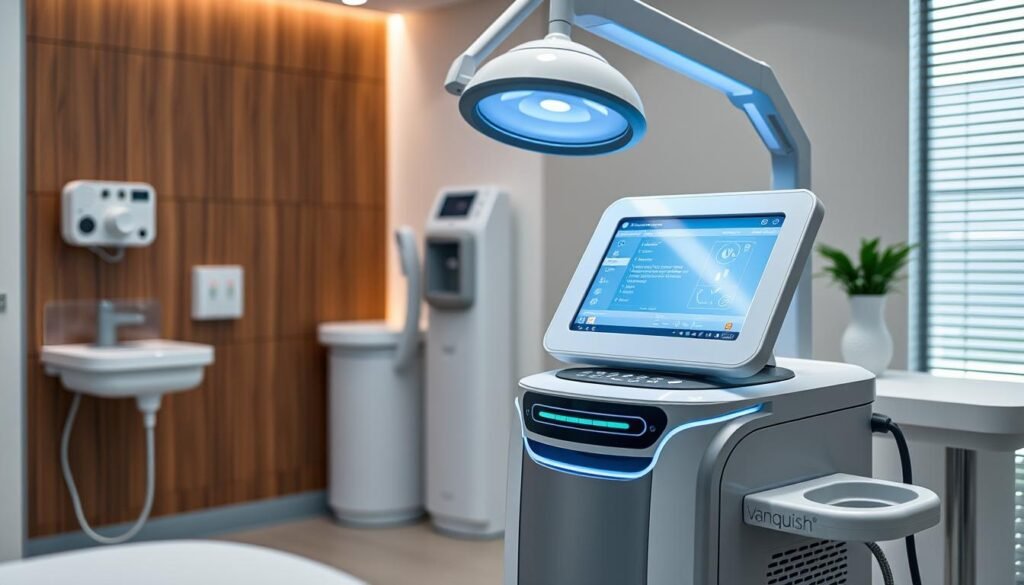
Laser Fat Removal
Laser fat removal technologies, such as SculpSure, employ controlled light-based heat to target fat cells. The laser energy penetrates the skin, causing the fat cells to rupture and be naturally eliminated by the body. This method is particularly effective for reducing fat in specific areas, such as the abdomen and flanks.
SculpSure and similar technologies offer a non-invasive solution with minimal discomfort and no downtime, making them attractive options for individuals seeking to reduce fat without surgery.
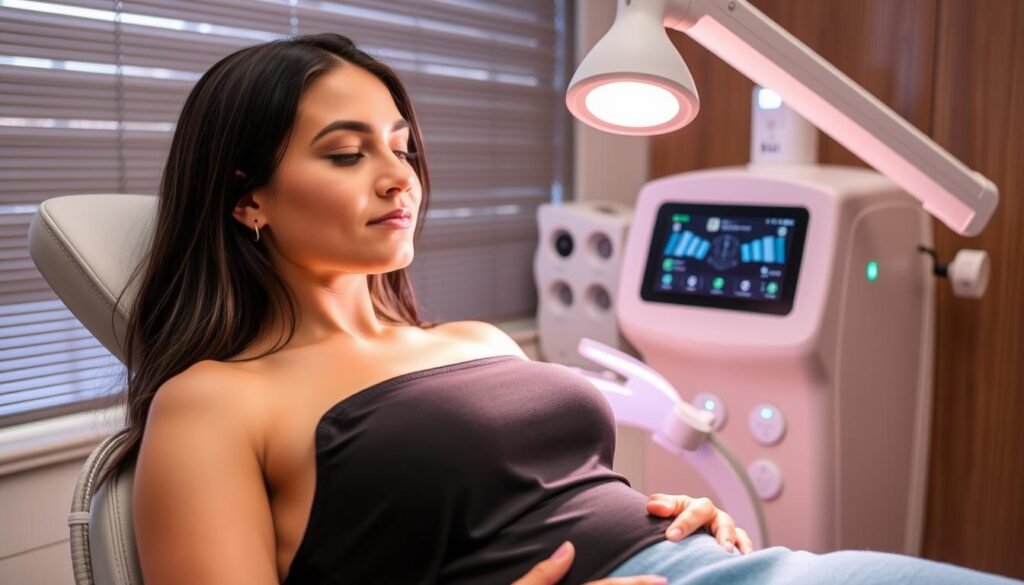
Ultrasound Fat Reduction Therapy
Ultrasound fat reduction therapies, like UltraShape, use focused sonic waves to create mechanical disruption of fat cells. This non-invasive technique results in minimal discomfort and no downtime, as it targets fat cells without affecting surrounding tissues.
While the treatment experience and expected results may vary, ultrasound fat reduction is a valuable option for those seeking to reduce fat without surgery. Multiple sessions may be required for optimal results.
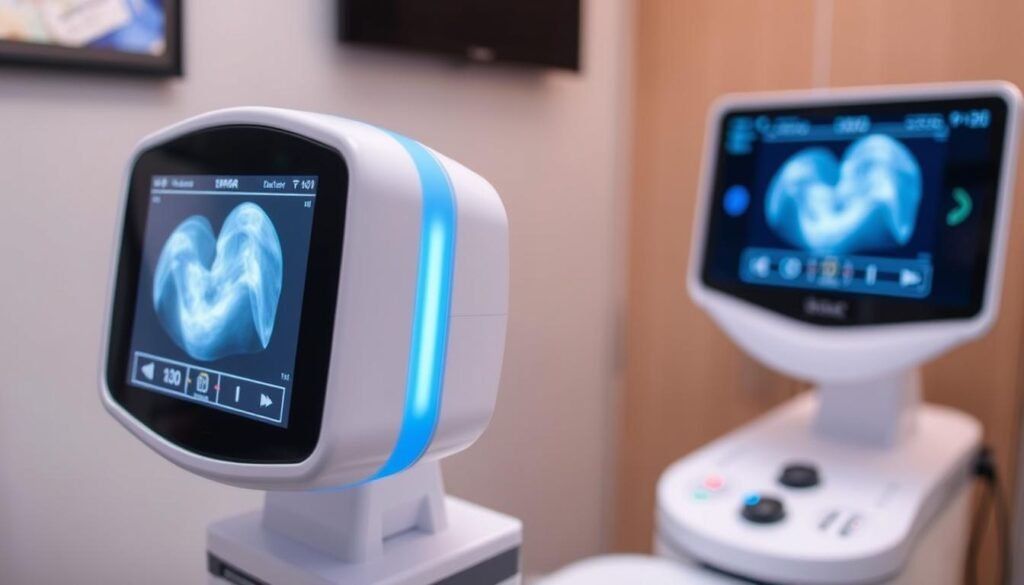
In conclusion, heat-based fat reduction methods offer a range of effective and non-invasive solutions for individuals seeking to lose weight and improve their body contour. By understanding the different technologies available, including radiofrequency, laser, and ultrasound treatments, individuals can make informed decisions about their weight loss journey.
Light and Energy-Based Treatments
Light and energy-based treatments offer a cutting-edge approach to fat reduction and body contouring. These innovative technologies utilize specific wavelengths of light or energy to target fat cells, enhance muscle tone, and improve skin quality.
Red Light Therapy for Fat Loss
Red light therapy, such as UltraSlim®, uses specific wavelengths of light to shrink selected fat cells in areas like the abdomen, hips, and thighs. This non-invasive treatment not only reduces fat but also tightens and smooths the skin. Most patients opt for three or more treatments to achieve their desired results, which can appear within a few hours after treatment and continue to improve as the body metabolizes the fat.
A study published on the National Center for Biotechnology Information (NCBI) website discusses the efficacy of low-level laser therapy for body contouring, supporting the use of red light therapy for fat loss.
Photobiomodulation (Low-Level Light)
Photobiomodulation, or low-level light therapy, works by triggering biochemical changes in fat cells, leading to their shrinkage. This process occurs without generating heat, instead relying on the biochemical effects of the light on the cells. As a result, the fatty contents are released and naturally eliminated by the body, contributing to fat loss.
Electromagnetic Muscle Stimulation
Electromagnetic muscle stimulation technologies, like EMSculpt, use focused energy to induce supramaximal muscle contractions. These contractions not only build muscle but also reduce fat, offering a dual benefit. This technology complements other fat reduction methods by addressing both fat volume and muscle tone, leading to more comprehensive body contouring in its natural form.
These light and energy-based treatments are typically comfortable, with some creating sensations similar to an intense workout, while others are virtually sensation-free. By combining fat loss with muscle toning and skin tightening benefits, these technologies provide a holistic approach to non-invasive weight loss.
Combination Therapies for Enhanced Results
Combination therapies are revolutionizing the field of non-invasive weight loss by addressing multiple aspects of body sculpting simultaneously. By merging different treatment modalities, these therapies offer a more holistic approach to body contouring and fat reduction.
ThermaLipo: A Synergistic Approach
ThermaLipo (Laser + Radiofrequency)
ThermaLipo is a cutting-edge combination therapy that leverages both laser technology and radiofrequency energy to achieve comprehensive body contouring results. This treatment works by liquefying fat cells while simultaneously stimulating collagen production, making it particularly effective for areas where skin laxity is a concern alongside fat reduction.
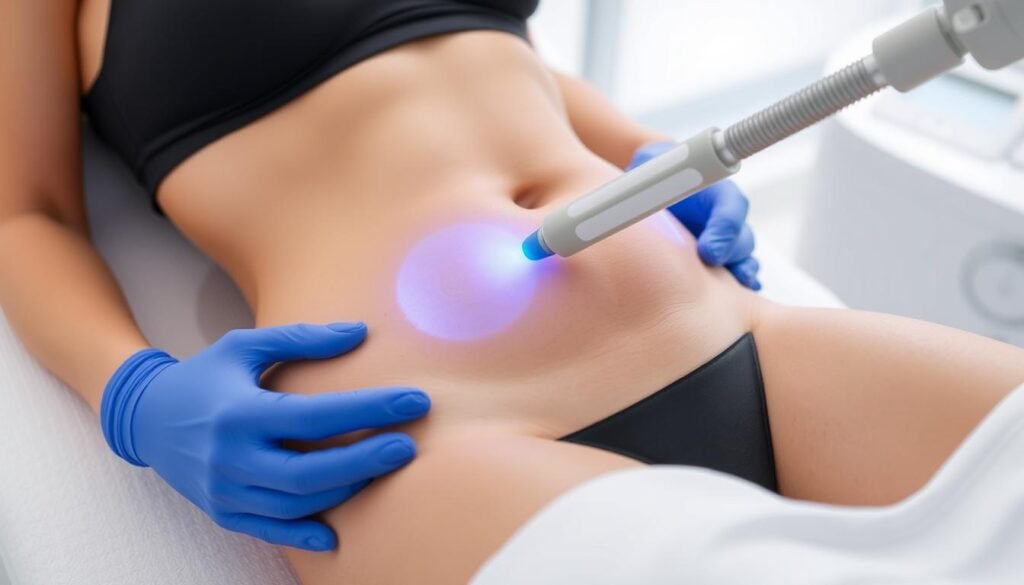
ThermaLipo is great for areas of the body that require both fat removal and skin tightening, such as the hips, waist, abdomen, thighs, and face. By combining laser liposuction with radiofrequency, ThermaLipo not only reduces fat but also enhances the overall appearance of the treated area.
EMSculpt Neo (RF + Electromagnetic)
EMSculpt Neo represents another significant advancement in combination therapy, combining radiofrequency heating with electromagnetic muscle stimulation. This dual-action approach allows for simultaneous fat reduction, muscle building, and skin tightening in a single treatment session.
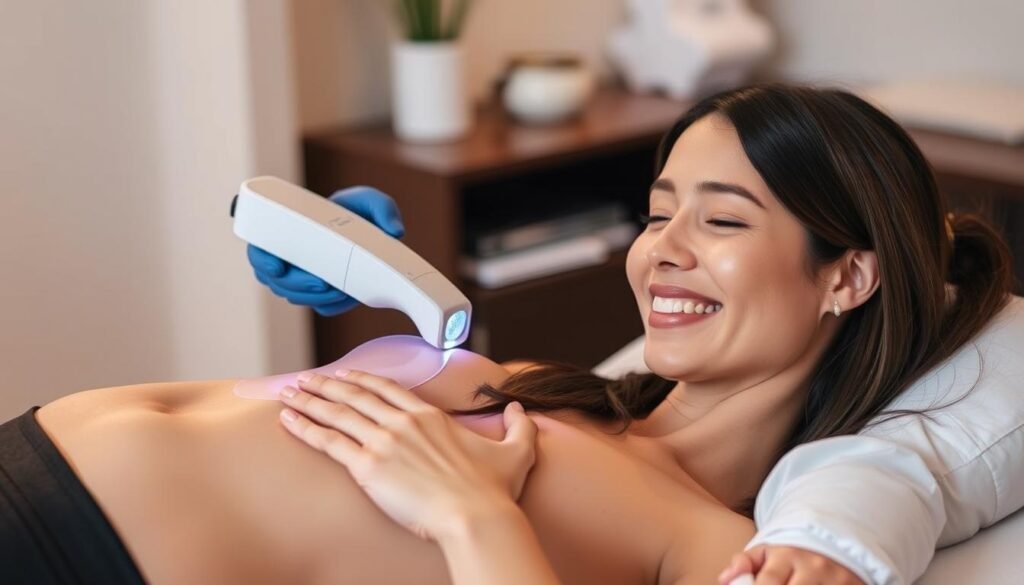
EMSculpt Neo can achieve up to 30% fat reduction and a 25% muscle increase after a series of treatments, making it one of the most comprehensive body sculpting technologies available. The synergy between radiofrequency and electromagnetic stimulation not only reduces treatment time but also maximizes outcomes, providing superior results compared to single-modality treatments.
The use of combination therapies like ThermaLipo and EMSculpt Neo underscores the evolving landscape of non-invasive weight loss treatments, offering patients more effective and efficient solutions for achieving their body contouring goals.
Safety Considerations and Potential Risks
As the popularity of non-invasive weight loss methods grows, so does the importance of understanding their safety profile. Non-invasive fat reduction treatments are considered safe when performed by qualified professionals using FDA-cleared devices. However, like any medical procedure, they are not without potential risks and side effects.
Common Side Effects
Patients undergoing non-invasive fat reduction procedures may experience temporary side effects, including redness, swelling, bruising, and discomfort in the treated areas. These effects are generally mild and resolve on their own within a few days to a few weeks. For instance, body treatments may result in temporary sensitivity or nodules that typically subside without intervention.
| Side Effect | Duration | Severity |
|---|---|---|
| Redness | Few hours to few days | Mild |
| Swelling | Few days to few weeks | Mild to Moderate |
| Bruising | Few days to few weeks | Mild |
Who Should Avoid These Treatments
Certain individuals should avoid non-invasive fat reduction treatments due to potential health risks. This includes people with specific medical conditions, such as diabetes or circulatory disorders, and those with implanted devices like pacemakers. Pregnant or breastfeeding women are also generally advised against these treatments. It’s crucial for patients to disclose their full medical history during the consultation to assess their suitability for the procedure.
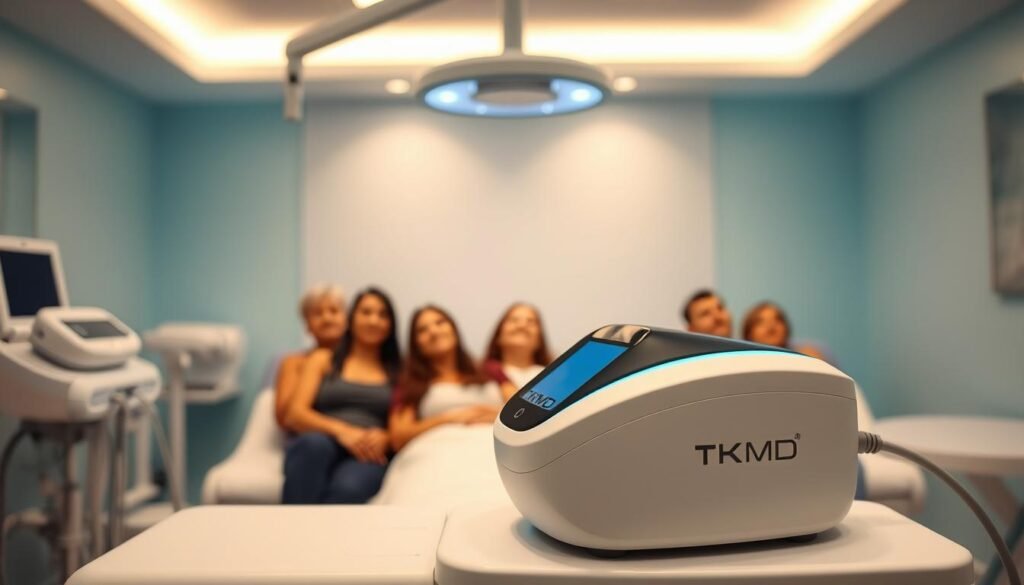
Choosing a qualified provider who uses FDA-cleared devices and follows proper protocols is essential to minimize risks. A thorough consultation before treatment, including a review of medical history and setting realistic expectations, is vital for maximizing safety and efficacy.
Maximizing Results from Non-Invasive Treatments
Optimizing the results of non-invasive fat reduction treatments involves more than just the treatment itself. To get the most out of these procedures, it’s crucial to adopt a holistic approach that includes complementary lifestyle changes and a clear understanding of what to expect from the treatment process.
Complementary Lifestyle Changes
Maintaining a healthy lifestyle is vital to preserving and enhancing the results of non-invasive weight loss treatments. This includes proper nutrition and regular exercise, as weight gain can compromise the outcomes. Additionally, staying hydrated, practicing lymphatic massage, and engaging in gentle movement after treatment can help accelerate the body’s natural fat elimination process, potentially enhancing results.
- Stay hydrated to help flush out fat cells
- Practice lymphatic massage to stimulate fat elimination
- Engage in regular exercise to maintain weight loss
- Eat a balanced diet to support overall health
Treatment Frequency and Maintenance
The frequency of treatments and maintenance protocols can vary depending on the technology used. Some treatments may require a single session, while others may need multiple sessions spaced weeks apart. For instance, CoolSculpting often requires one to two treatments, with results noticeable within a month. Understanding the treatment protocol and being aware of the need for potential touch-up treatments is essential for optimal outcomes.
Setting Realistic Expectations
It’s essential to have realistic expectations about the treatment outcomes. Results from non-invasive fat reduction treatments appear gradually over several weeks to months. These procedures are designed for body contouring rather than significant weight loss. Typically, results are noticeable within 6 weeks, with final results visible after about 3 months. Being patient and understanding the timeline for results can help manage expectations and lead to higher satisfaction with the treatment outcomes.
Choosing the Right Non-Invasive Weight Loss Procedure
With numerous non-invasive fat reduction technologies available, choosing the right one depends on several factors. The decision-making process involves understanding your body concerns, goals, and circumstances to select the most appropriate procedure.
Factors to Consider Before Treatment
Before undergoing a non-invasive weight loss procedure, several factors need to be considered. These include your body composition and fat distribution patterns, as different technologies target fat in various ways. Additionally, skin laxity, budget constraints, and time availability for treatments and recovery play crucial roles in determining the most suitable procedure.
It’s essential to consult with a qualified cosmetic surgeon who is experienced in performing these procedures. They can help determine if you’re a good candidate for non-invasive fat removal based on your current weight and desired results. Generally, individuals close to their ideal weight benefit most from these procedures.
| Factor | Consideration | Impact on Procedure Choice |
|---|---|---|
| Body Composition | Fat percentage and distribution | Different technologies target different fat types |
| Skin Laxity | Looseness of skin in the treatment area | Some procedures may also address skin tightening |
| Budget | Cost of the procedure and potential multiple sessions | More expensive procedures may offer better results or fewer sessions |
Questions to Ask Your Provider
When consulting with a potential provider, it’s crucial to ask the right questions to ensure you’re making an informed decision. Some key questions include:
- What experience do you have with the specific technology being considered for fat reduction?
- Can you provide before-and-after photos of previous patients?
- What are the expected results, and how many treatments are typically needed for non-invasive fat removal?
- What is the total cost of the procedure, including any additional fees?
Choosing a qualified provider who uses FDA-cleared devices and has extensive experience with the specific technology is vital. A personalized treatment plan that may combine different technologies can offer optimal body contouring results.
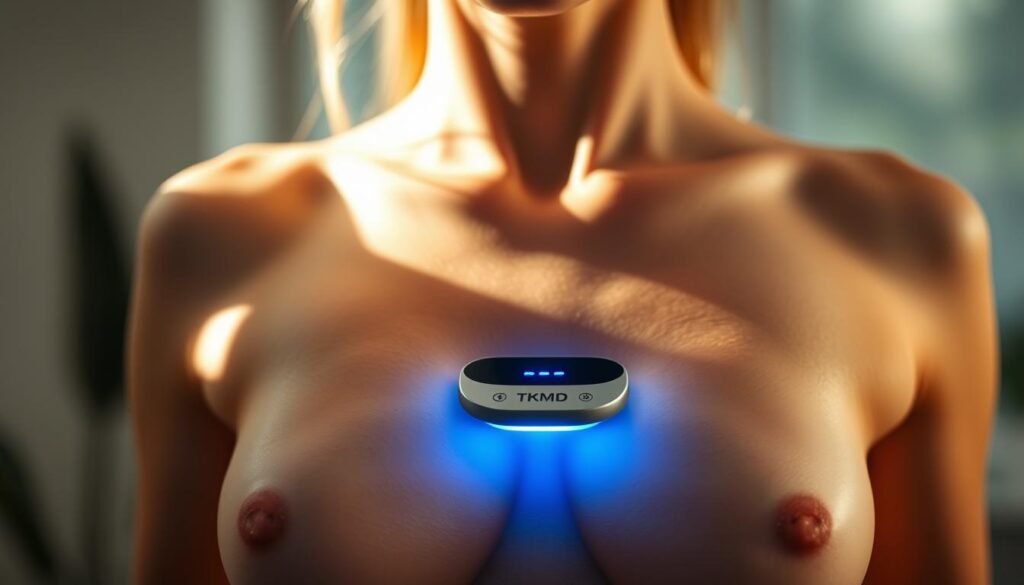
Conclusion: The Future of Non-Invasive Weight Loss
With the rise of non-invasive fat reduction technologies, individuals now have access to a range of safe and effective alternatives to surgical liposuction. Our exploration of non-invasive weight loss methods has highlighted the diversity of technologies available, including cold-based, heat-based, light-based, and combination therapies, each offering unique benefits and applications.
The field of body contouring is rapidly evolving, with emerging technologies providing more targeted treatments, reduced treatment times, and enhanced combination approaches. These advancements are making treatments more comfortable, effective, and accessible to a wider range of patients seeking alternatives to surgery.
As we look to the future, it’s clear that non-invasive weight loss procedures will play an increasingly important role in helping individuals achieve their aesthetic goals. By combining these technologies with healthy lifestyle choices, people can enjoy more natural-looking body contouring results without the risks associated with surgical procedures.
